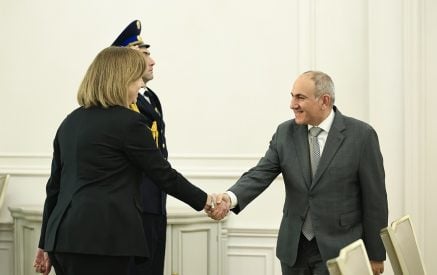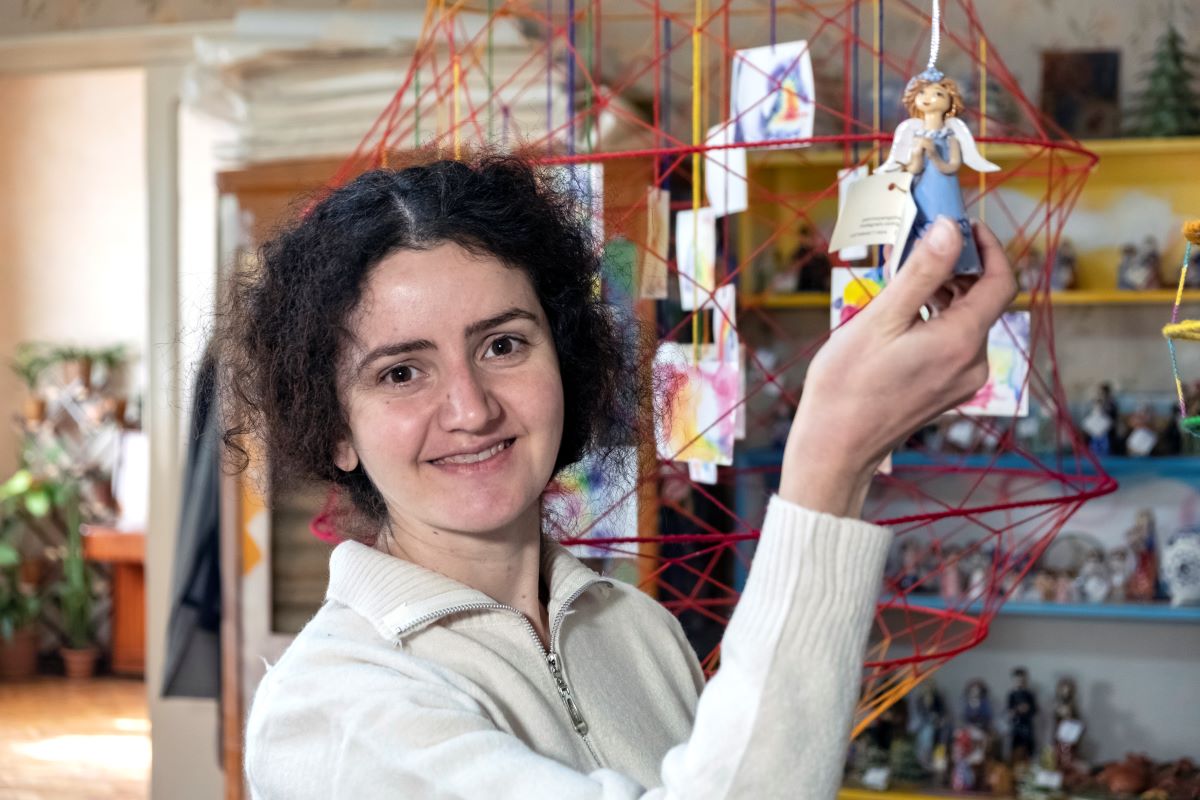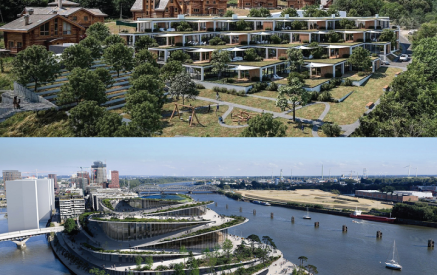When we visited the Gohar Petrosyan Art Centre in Hatsik village in the Skirak province of Armenia, Gohar was leading an art class with eleven-year-old Gayane. Gohar has hearing and speech problems, but due to her positive energy and her art, and with the help of family members or by writing, she can easily communicate with both visitors and pupils at her studio.
The clay struck against the clay, there was a sound, and Gohar decided that the angels she had made should be bells. And everyone loved the bell-angels made by Gohar Petrosyan, a 38-year-old artist-ceramist, living in Hatsik village. Gohar says: “My angels must have a face.” That makes her angels different from others. Gohar is also different, with her calmness, kindness, friendliness, hard-working, and, most importantly, her willpower.
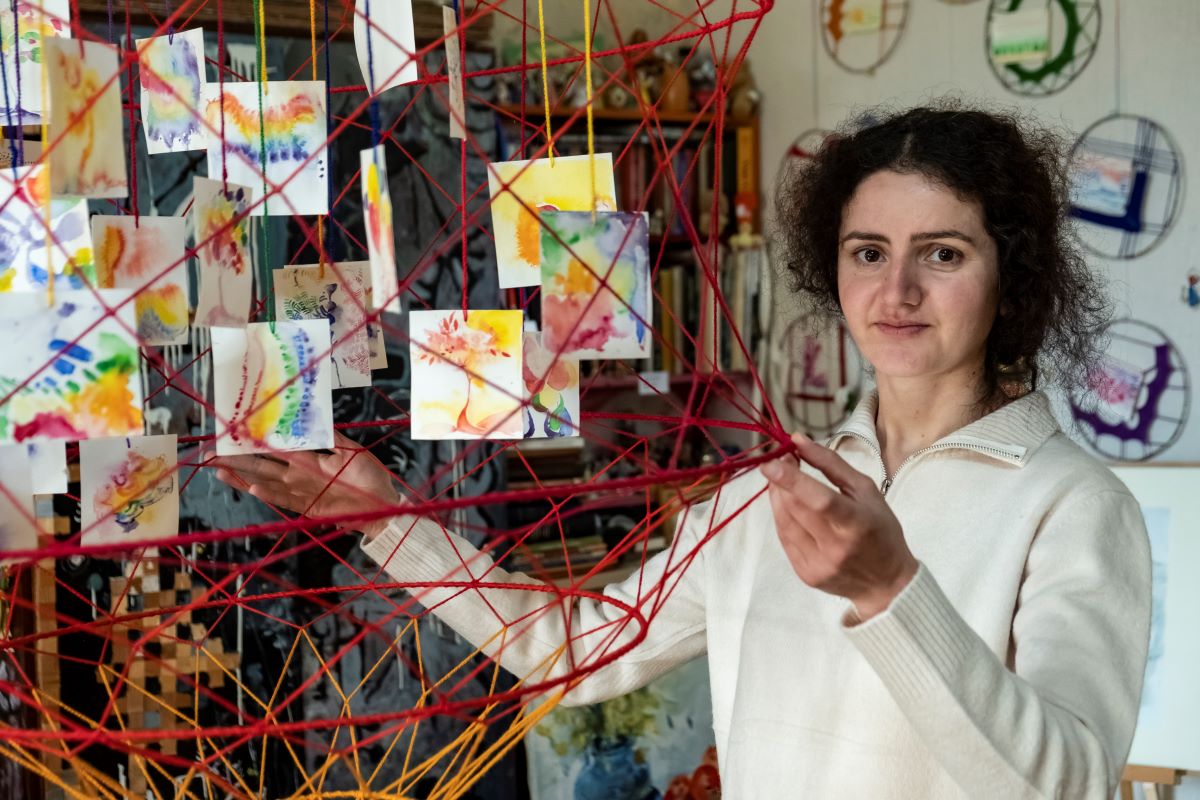
Gohar Petrosyan’s “Creation of the World” work.
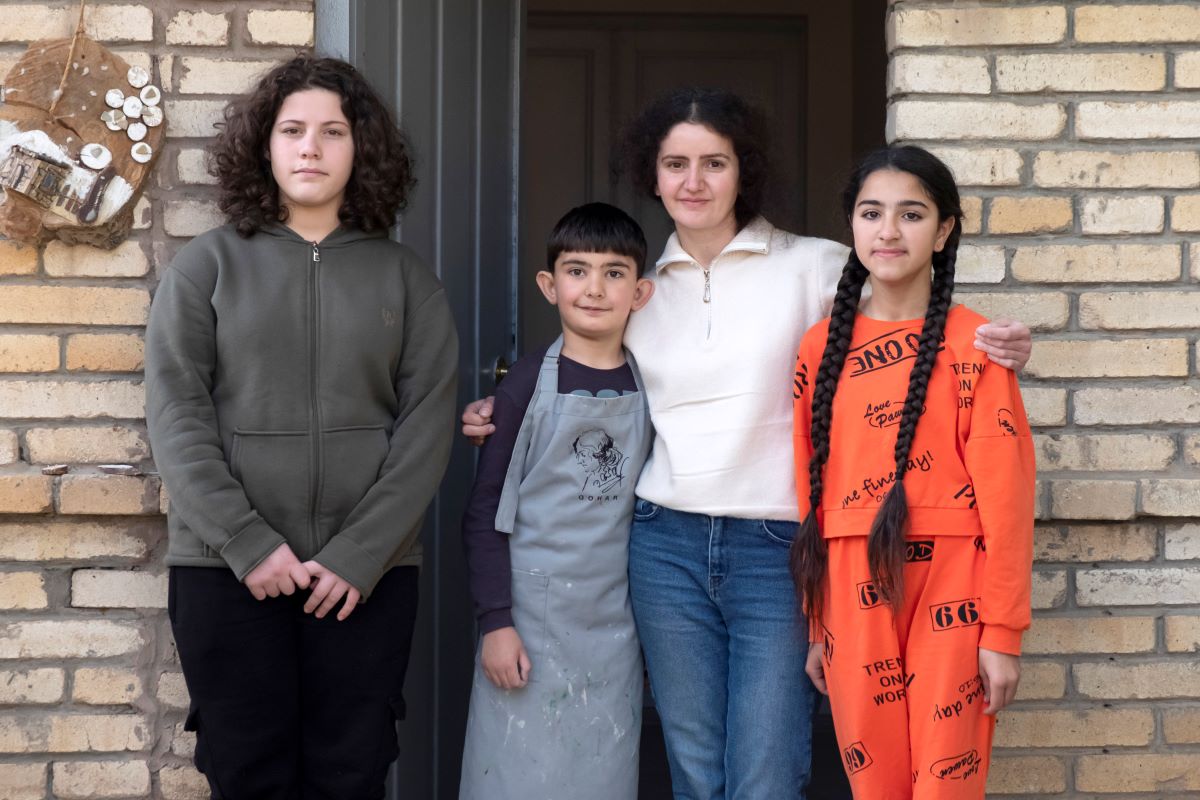
Gohar with her pupils Ashot, Bella, Luiza.
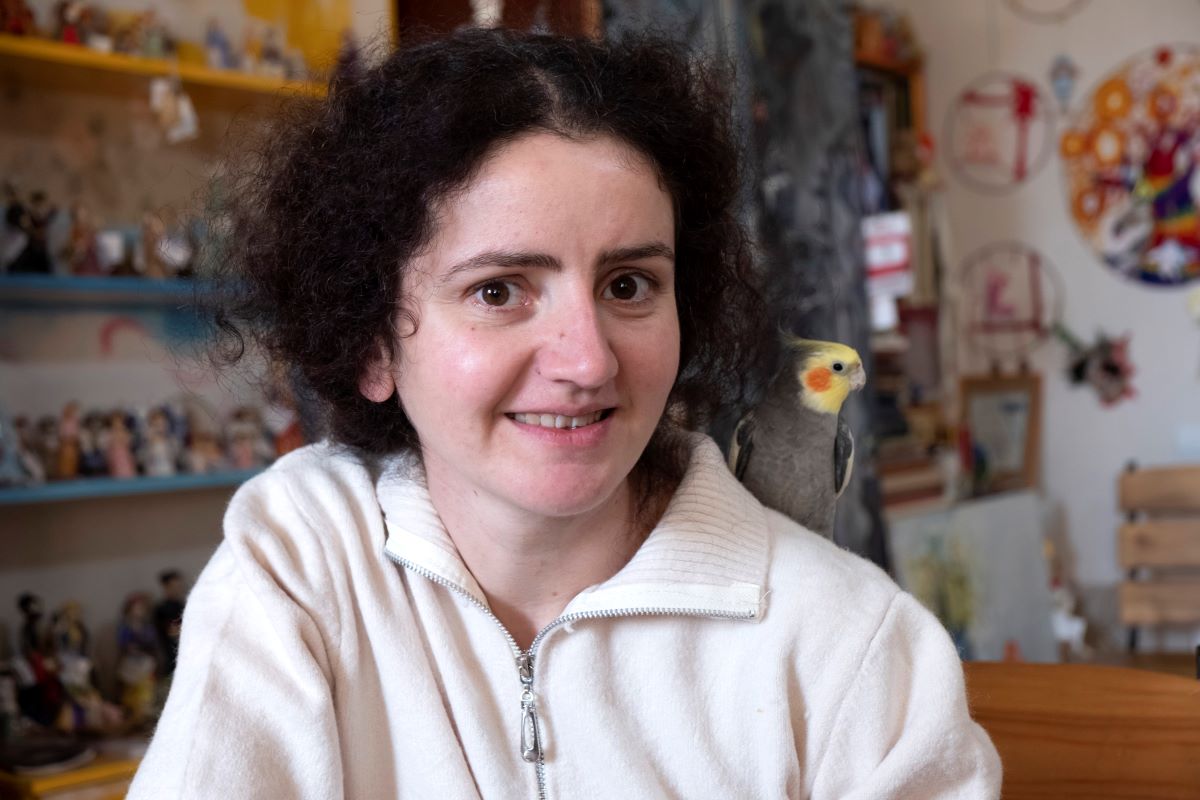
Parrot calls Gohar “pupush” (baby).
The artist-ceramist Gohar Petrosyan is known not only in Armenia, but also beyond the country’s borders. When we visited, clay angels and Christmas trees were carefully laid out on the studio table. Gohar said she would send them to Strasbourg, France, and present them at the New Year fair. Gohar Petrosyan, who has participated in hundreds of exhibitions and sales, festivals, and competitions, has become an infectious example for many young people with her ceramic statuettes. Every year, thousands of visitors from Ukraine, Georgia, and even western European countries come to her studio, communicate with Gohar, and learn about her work.
Welcome to Gohar’s art studio from EU NEIGHBOURS east on Vimeo.
Gohar is an active participant in the EU ‘Local Empowerment of Actors for Development’ (LEAD) Programme. She is also a member of the Central Shirak Local Action Group (LAG). Gohar explained that being part of the Central Shirak LAG gave her the opportunity to communicate with other actors in the region and to get support for her new pottery studio.
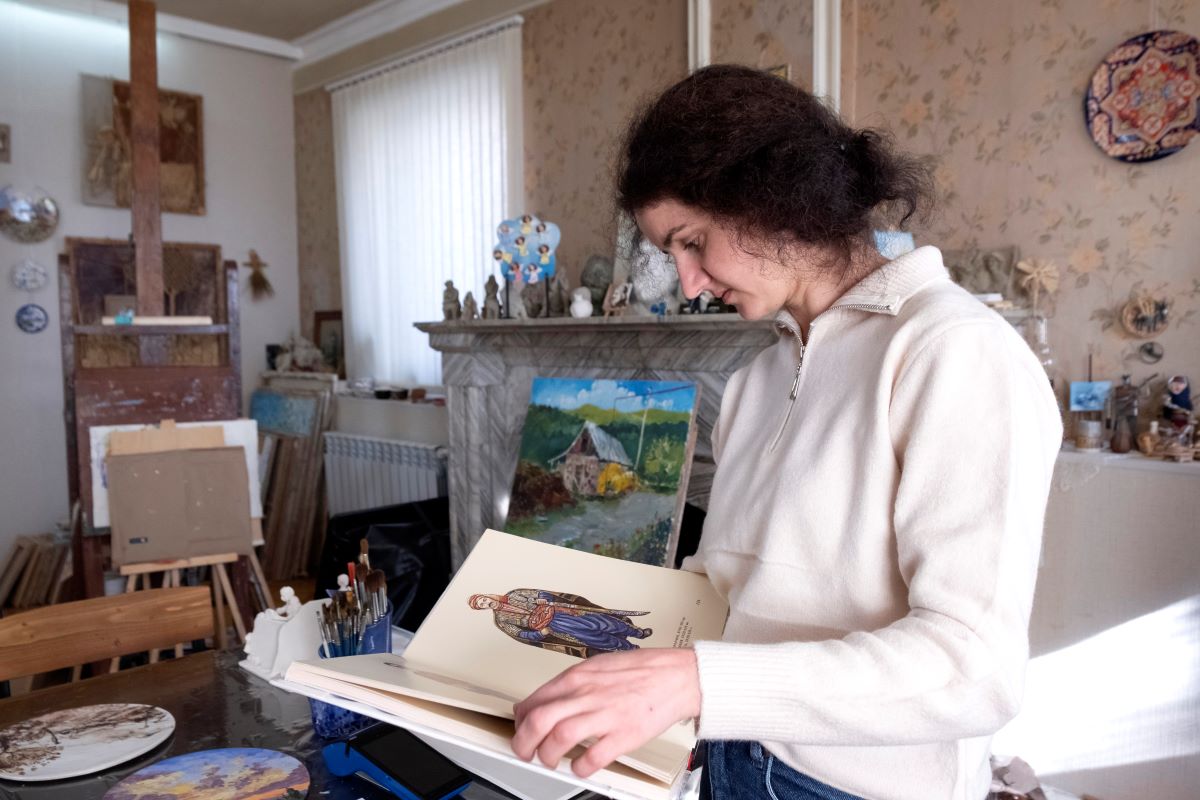
Gohar decided to present the Armenian taraz to the world.
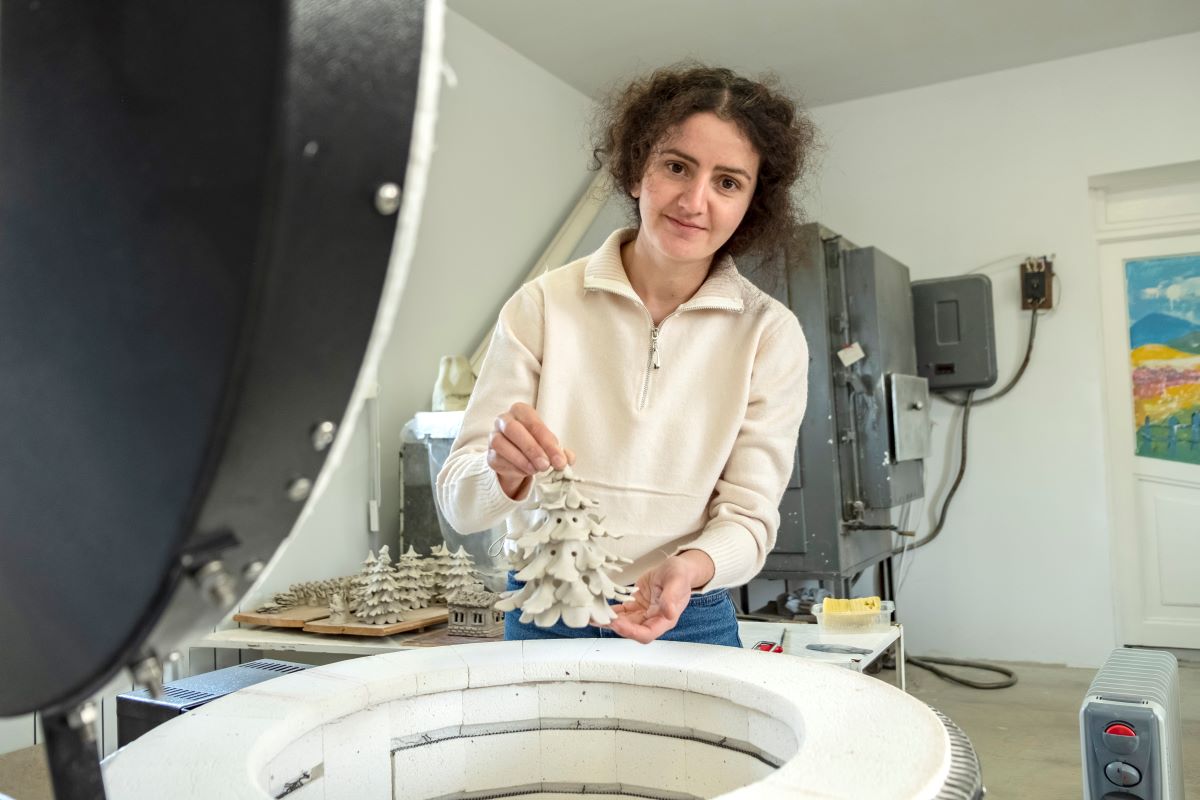
In 2006, Gohar’s family moved from Gyumri to Hatsik village.
The EU project aims to reduce poverty, inequality and vulnerability through integrated, sustainable and participatory rural development. It improves employment, rural economy, community empowerment, and the living conditions and resilience of the rural population, while protecting the environment and mainstreaming gender equality and women’s empowerment.
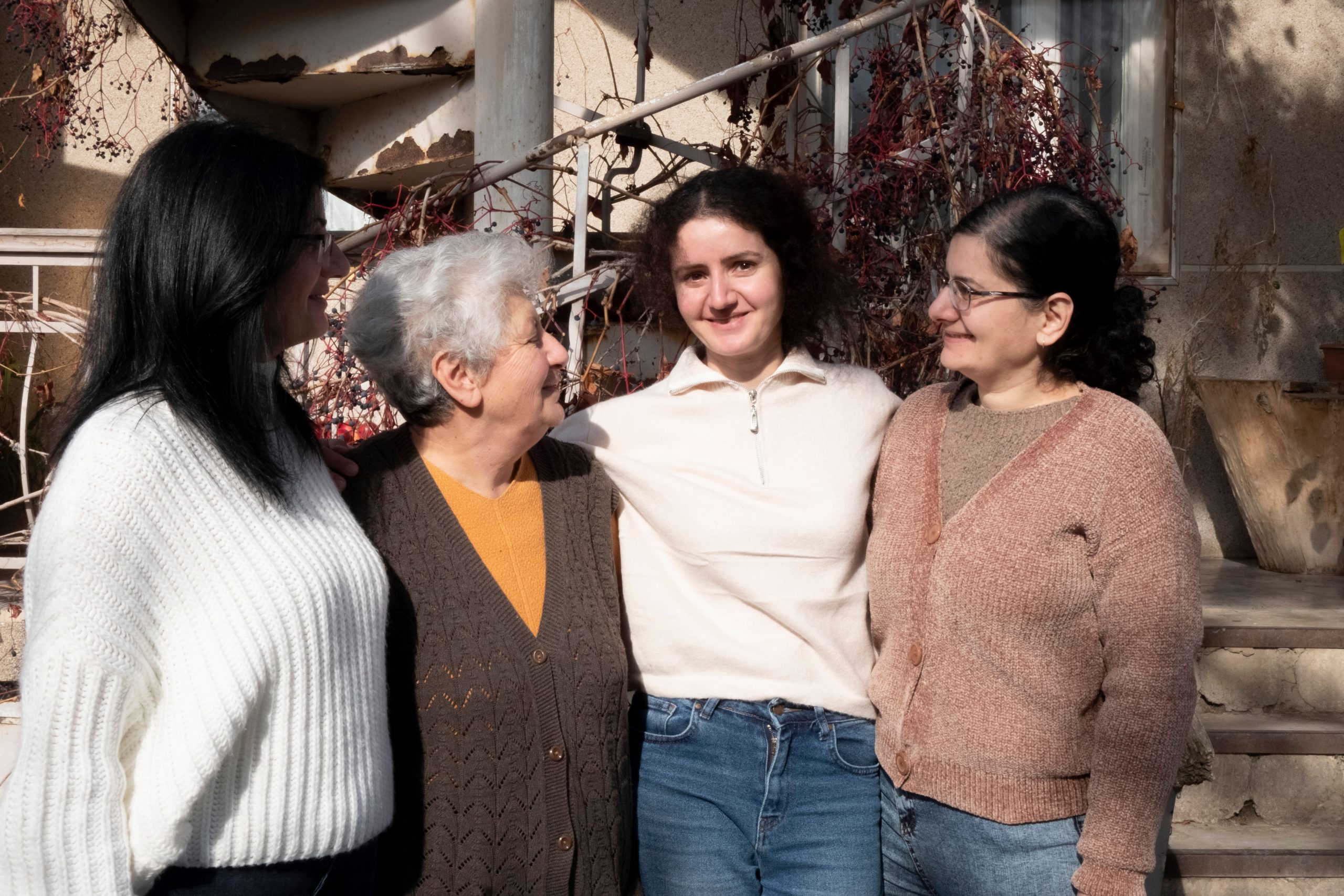
Gohar likes portraits: she established her visual brand – ‘GOHAR’, with her portrait.
With the support of the European Union, Gohar has established a new pottery studio next to her house in Hatsik. In 2006, Gohar’s family moved from Gyumri to Hatsik village. The three-room apartment in Gyumri was unsuitable for her because she always gravitated towards nature, towards the land. At the time, no one in the family could imagine that within a few years, Gohar would become the village’s main attraction and establish a new and bigger studio. As the number of visitors to the studio grew, as well as the number of children participating in her master classes, the studio began to be too small.
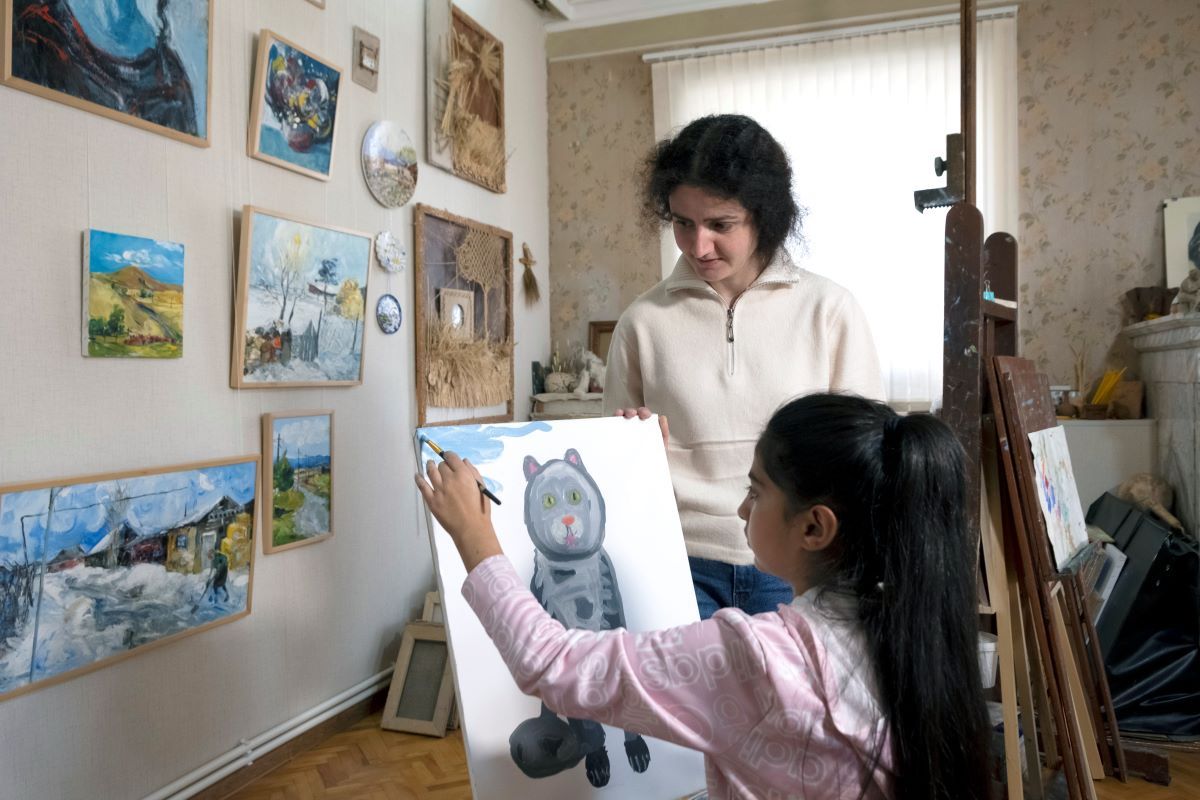
Gohar is leading an art class with eleven-year-old Gayane.
In her new pottery workshop, set up with the support of the European Union, Gohar will be able to work on her ceramics in one room, where all the equipment is installed, and hold master classes in the other. The works at the pottery studio are in their final stages, and she will be able to move in in the spring. Children come to the Gohar Petrosyan Art Centre for master classes in painting and pottery, and visitors can paint clay angels and pomegranates.
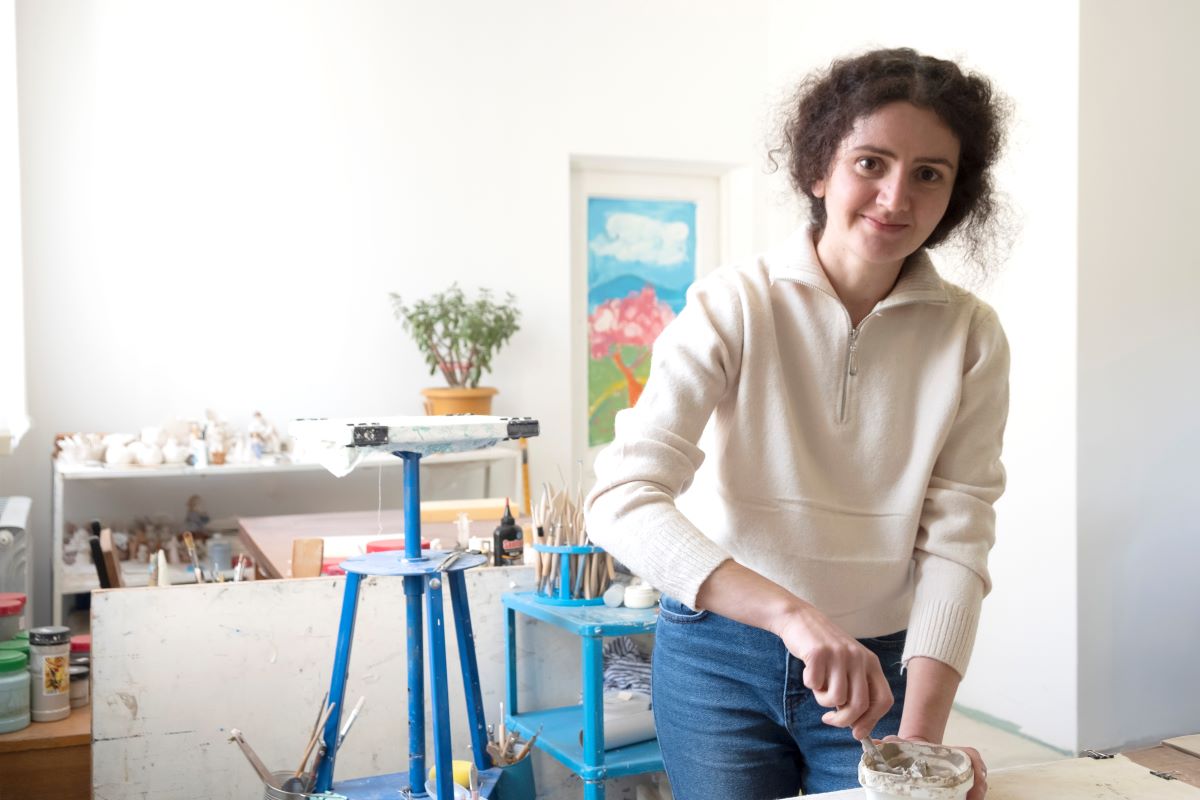
Gohar in her new pottery studio
Gohar loved to work with putty since kindergarten. When she was a 4th year student, she asked the sculptor Zaven Koshtoyan to teach her sculpting. Gohar then became interested in working with clay in 2013 when she was an illustrator in a pottery studio attached to the Italian consulate.
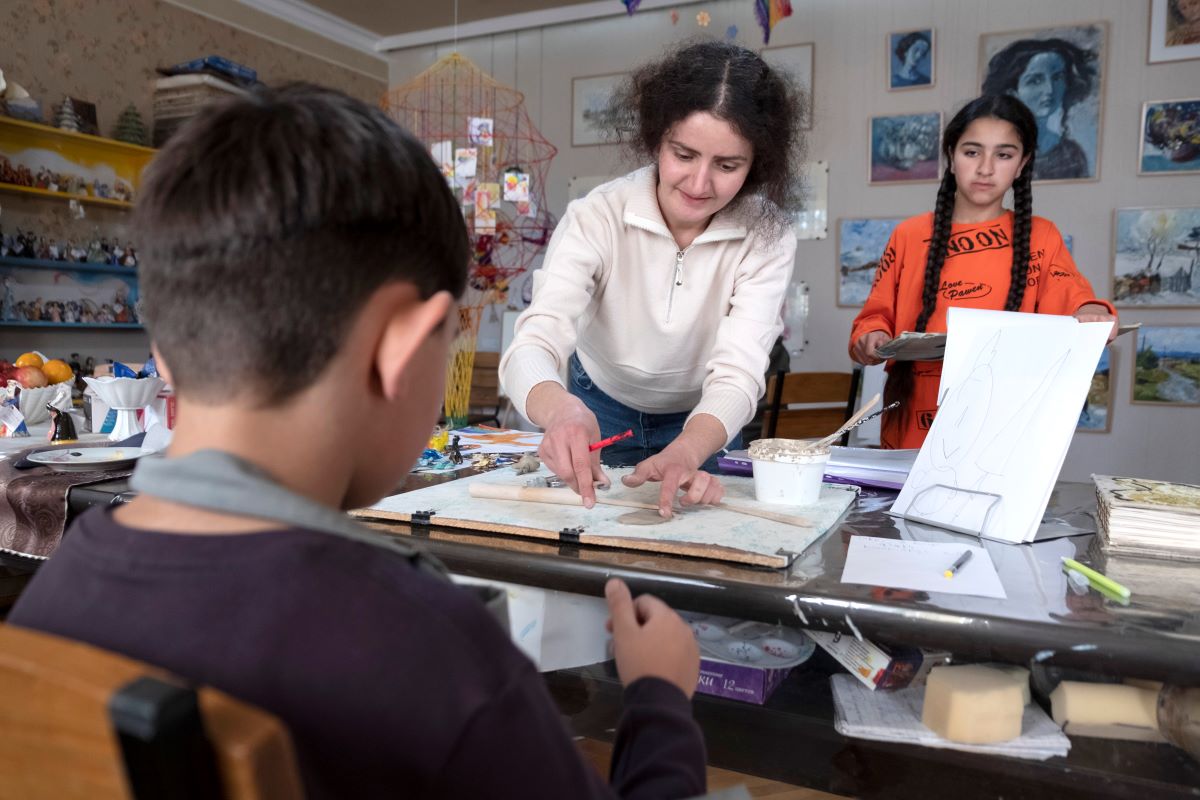
Gohar’s pupils surround her all the time.
At that time, together with her father, she decided she would establish her own visual brand – ‘GOHAR’, with her line-drawn portrait.
Gohar studied at the Gyumri Branch of the State Academy of Fine Arts of Armenia. She always liked to learn from famous artists and her father took her to many masterclasses. Now Gohar herself is famous. She received a Folk Master’s Certificate in pottery from the Hovhannes Sharambeyan Museum of Folk Art.
The book on the table in Gohar’s studio is a collection of the outstanding Armenian artist Minas Avetisyan. While working, Gohar usually listens to Komitas. She does not allow everyone to come near her works. She allowed us. I asked Gohar what were her favourite works? Gohar replied: “Etudes, angels, illustrated on tiles with scenes of Hatsik village.”
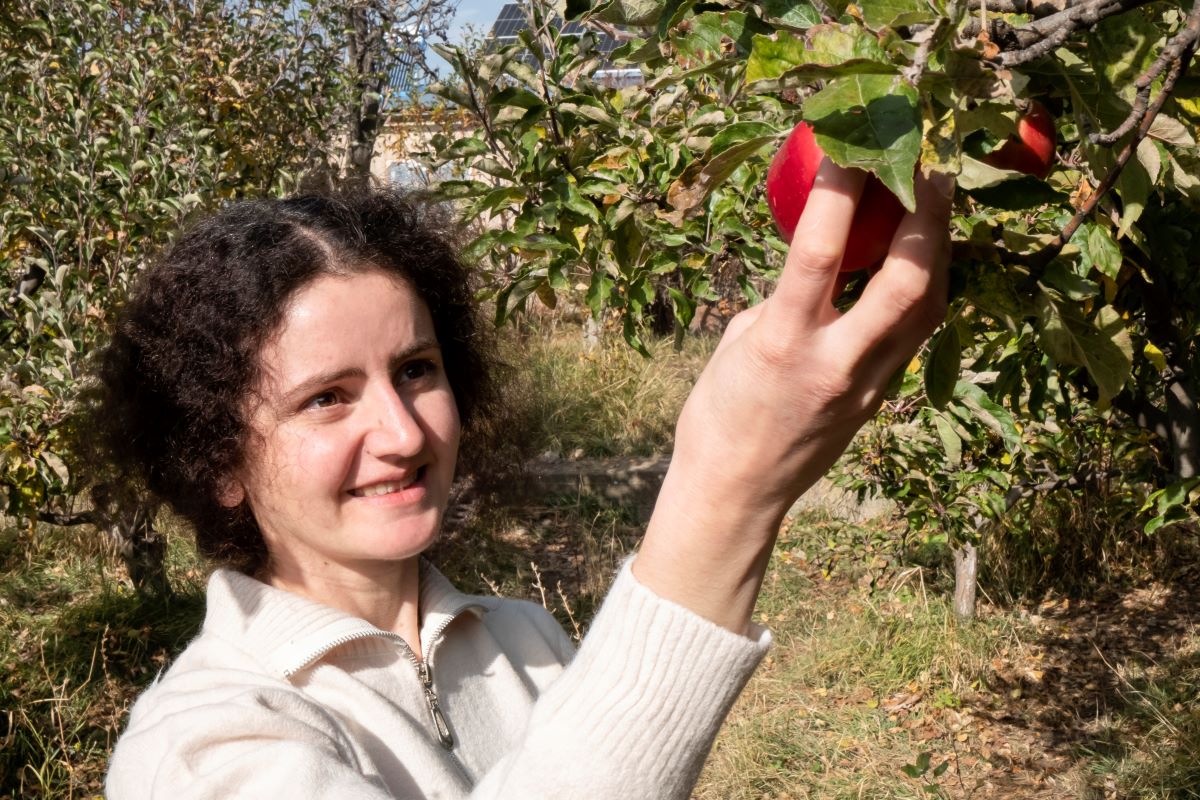
Gohar in the yard of their house in Hatsik village.
Gohar also decided to present the Armenian taraz (Armenian national dress) to the world. She studied the costumes of different Armenian settlements for a long time, and to do it accurately, she consulted with ethnographer friends. She presents taraz from Gyumri, Yerevan, Artsakh, Syunik, and other settlements.
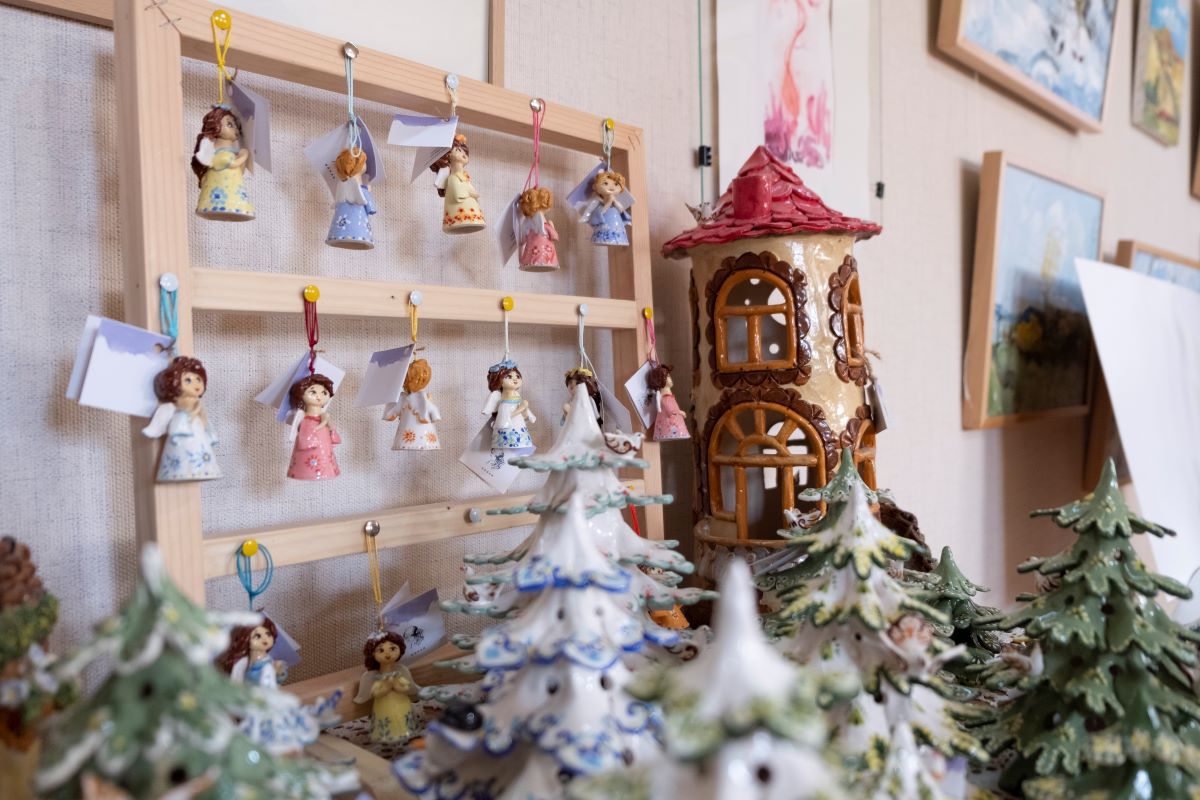
Gohar’s clay angels and Christmas trees are presented at the New Year fair, in Strasbourg.
Gohar was fond of clowns when she was a student and had many pictures and puppets. Her favourite clown puppet was in her studio. She has always depicted sad clowns; she once said, “Maybe I’m imitating myself.” Painting old wardrobes is also one of her favourite jobs. As a student, she decided to decorate an old wardrobe in her home with motifs inspired by Armenian rock paintings. A professor from the University of Ghent in Belgium visited Gohar’s studio and asked to sell him the wardrobe; Gohar refused.
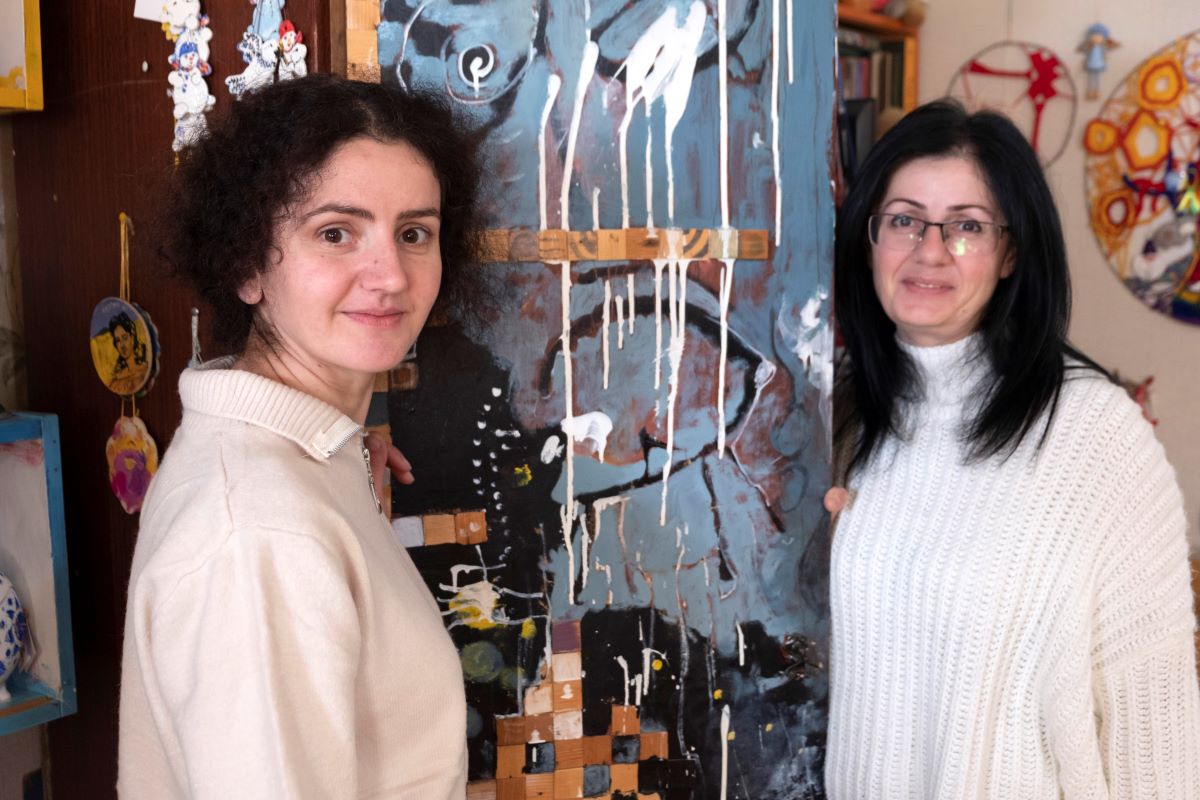
Gohar’s sister, Hasmik Petrosyan said that they didn’t even imagine that Gohar would have her business.
Gohar’s sister, Hasmik Petrosyan, a rehabilitation doctor by profession, said Gohar started drawing at the age of two. Hasmik explained that when she looks at a child’s development in all areas, a two-year-old child can’t draw, but Gohar could: “We understood that since she has a hearing and speech problem, she would convey her speech to people through non-verbal communication. Gohar achieved all this thanks to her diligence. Even 8, 10, 20 years ago, if they had said that Gohar would have her brand, her business, I would not have imagined it.”
Gohar rejoices in the success of others, her friends. She has created a unique corner of her friends’ works. During our conversation, Gohar was surrounded by her students who came to the masterclass one after another. At the end of the conversation, we asked Gohar what she wanted to convey to the world with her works. Gohar answered: “I want people to remain human and remain with love.”
Tatev Harutyunyan
This article was produced in the framework of the ‘EU NEIGHBOURS east’ programme. The views expressed are solely those of the author of the article


